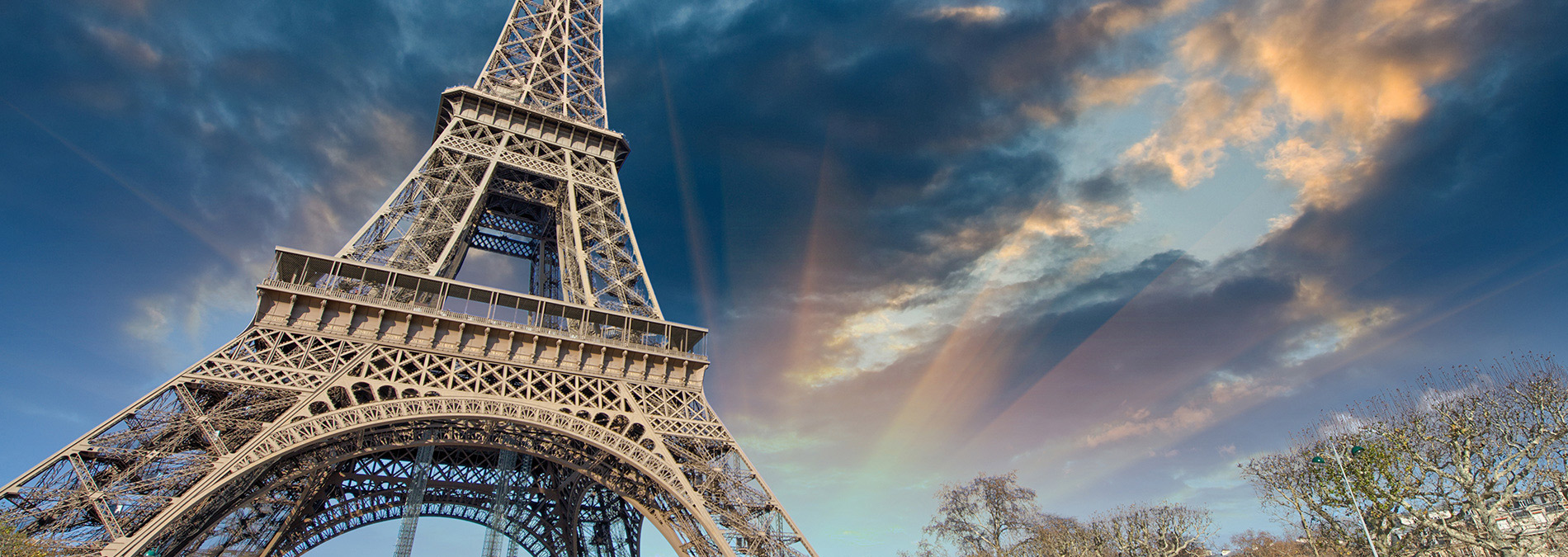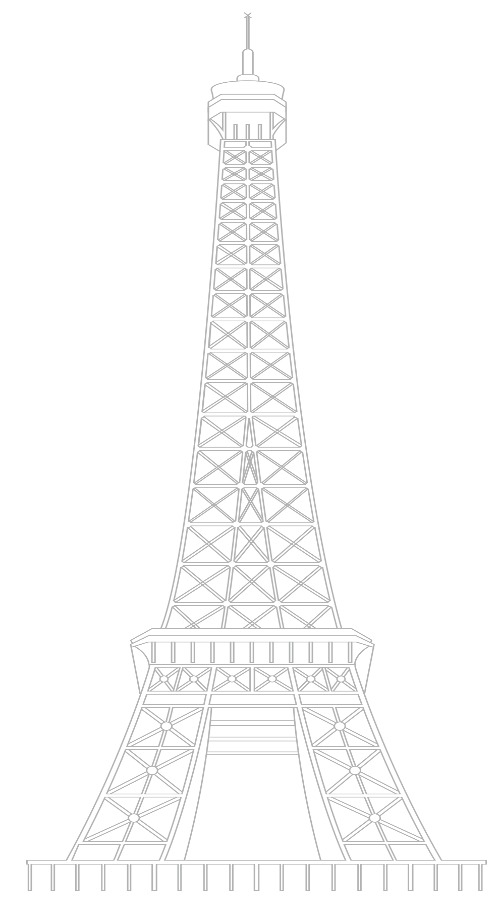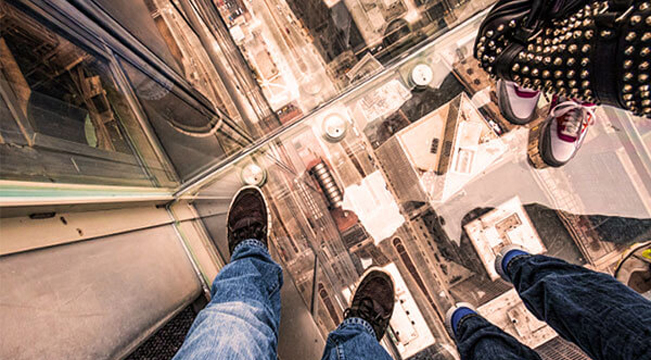Eiffel Tower | Otis Global Projects

Eiffel Tower
Bringing millions of passengers to the
perfect view of Paris
In creating his famous tower, Gustave Eiffel demonstrated both his engineering genius and a firm grasp of the emerging aesthetic of the industrial age. Otis engineers had to be inventive as well, finding new ways to design the tower’s lift systems – not just once, but twice, a century apart.
The French first turned to Otis before the tower opened in 1889. They needed lifts for the north and south curved pillars to carry visitors to the second level – without interfering with the tower’s iconic silhouette.
Constructing lifts to the first level was relatively straightforward: The pillars’ legs were wide and straight enough for a conventional system. Installing lifts to the second level was a different matter, given the sharp curvature involved. No French company was willing to take on the complex job.
Otis engineers designed two huge hydraulic cable lifts that ran on rail tracks. The big, beautiful machines became tourist attractions themselves.
In the 1980s, the French again turned to Otis, this time to re-engineer the tower’s entire lift system as part of a major renovation.
The lifts to the top presented the biggest challenge. Otis engineers used computer modelling to analyze the many difficulties, including tower sway and winds that can reach 62 miles per hour.
They came up with a radical new system: two duolift™ lifts using the longest open-air run ever covered by a lift – 525 ft. Each lift consists of two cabs, which act as each other’s counterweight: When one cab goes up, the other comes down.
Galvanised cables and anti-icing devices on the cars allow the lifts to operate year-round, even under severe weather conditions.
In 2001, we were contracted to modernize the two duolifts during a major renovation, and in 1993 we replaced the elevator cars. 30 years later, we are proud to be selected for a major machinery overhaul.
Ride along in the Eiffel tower with Otis


~ 4
TONS
Weight reduction
will be achieved with lighter-weight replacement materials

~3
MINUTES
Ride to the top

14
UNITS
Maintained by Otis

18
MONTH
On-going modernization contract
Pebbles in a stream
Modernist architect Emilio Duhart worked with Otis to design the duolift cabs.
The brightly coloured cabs – two yellow, two red – stand out against the tower’s bronze-painted ironwork like pebbles in a stream,
Duhart said, in keeping with his conception of the tower as an amusement park.
Le Jules Verne
Engineers battled the laws of equilibrium in designing the lift to reach the panoramic restaurant on the second level.
To conquer the variable slope of the south pillar, they devised a system based on Alpine cable-car techniques. They suspended the cab from a bracket, with auxiliary guides to suppress lateral movement and ensure a smooth ride. An 18-kilowatt motor on the restaurant’s roof provides power.
Quick facts about the Eiffel Tower
Gustave Eiffel’s company won the competition to build the tower for the 1889 Paris Exposition celebrating the 100-year anniversary of the French Revolution.
When Eiffel’s plans were unveiled, prominent Parisian artists and intellectuals petitioned to halt the project, comparing the tower’s design to a gigantic factory chimney that would be a blot on the cityscape.
Eiffel’s response: Do people think that because we are engineers, beauty plays no part in what we build?
-
1 Construction began - January 1887
-
2 Opened to public - March 31, 1889
-
3 Height - ~1,083 feet
-
4 Total Weight - ~10,100 tons
-
5 Annual visitors - ~6 million
-
6 Lights at night - 20,000 bulbs




